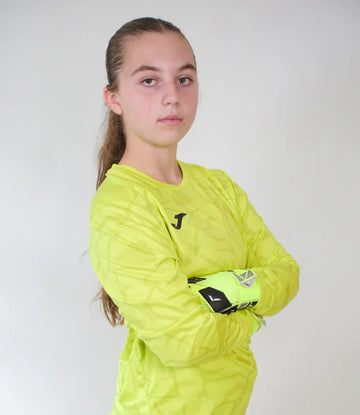My philosophy is work smarter not harder.
How do you make your job as a keeper easier on as well as off the field? The answer is to communicate effectively. On the field the keeper is the most important person with the vision to see the offensive attack and most importantly on defense, the counter attack. A goalkeeper is like a chess player. With each strategic move of his players through communication he puts his team on the offensive or prepares defensively. By communicating effectively a keeper can improve defensive organization of the entire team and initiate the attack thus handling fewer shots and resulting in less goals.
The role of the keeper is that of a leader. A leaders voice and language must be firm, spoken with conviction, and specific; never wavering or panicky. A keeper that speaks softly sends a message that he or she is unsure or lacks confidence. A keeper that screams and yells with a panic stricken voice sends a message of weakness to the apposing team and sends chaos through the defending team.
Communication can be two forms: verbal and non verbal. Verbal communication should take the form of simple and very specific phrases. Anything more than three words is missed by the defenders. One word instructions are most effective. Non verbal is simply hand gestures. Non verbal could be in the form of a point to open player, a point to the location to drop a back pass, the number of players needed in a wall shown by fingers, or the wave of the hand to push players up when distributing the ball.
Common Commands:
Keeper - Not keep. A cop doesn’t yell stop it is the Pol! It just isn’t effective enough. You need that second syllable. This the most important word in the keeper dictionary. It must be said with confidence and loud enough for the stands to hear you. This tells the team that the keeper is committed to the ball. This tells the attacker that the keeper is coming and he is in for it. The keeper call must be shouted prior to leaving the line. Again it is a warning and it will also tell the closest defender off the ball that they need to get back and cover the net.
Mark ?? - Who is Mark? Sometimes I hear keepers call his name once or multiple times in a panic: Mark Mark Mark. What does that tell a defender? Does it give a specific instruction or location? The who has so and so….. question also kills me. That doesn’t tell anything either. If calling you defenders name and a point to the open player doesn’t do the trick then assign the mark to a defender. Field players are classic for saying “he wasn’t my man” but he had to belong someone. Whether it is a middle fielder running down the wing, a stopper pushing up into the attack, or a set piece such as a corner the keeper has to dictate responsibility. The keeper should say with conviction “Jay, 10, left”; “Jim stay middle”; “Jeff front post”; “Jack back post”; “John, step, 8”.
Back - Is used to indicate that the keeper is an option. The proper instruction is "Keeper Back". The keeper should also point to the area outside the goal mouth were the ball should be played. Yelling back to a defender for a marking instruction creates confusion when it is also used in another manner.
Drop - I use drop when also communicating with my defenders. “ Ken drop” This would tell Ken that he is up too far. To be more specific give a distance. “Drop Left” “Drop 2 Steps”
Step Up - When trying to move your defense up instruct them how far. "Step 2" would indicate the defense would have to step up to steps or "Step to 18" would mean the defense line is at the top of the 18 yard box.
Out - Can also be used to catch the lazy striker off sides moving the defense quickly out is effective when the ball is cleared. Moving the defense quickly allows less space and time for the attacking team to organize anything substantial. This also helps eliminate a screen by a defender or a poor deflection into the net. Careful not to call out or push up too soon on corners! When the ball is cleared out of danger or there isn’t a one time shot threat then release your players off the post by calling out. "Step Out" is also common.
Wall - In direct or indirect situations the keeper must call “Wall” and the number of people in the wall. When positioning the wall, again short and sweet: “Two steps left”
Outside - Indicates to the defender with the ball to take the ball outside rather than turning it into a player or pressure. Outside communicates that there is no option inside.
There are terms and commands unique to each keeper. Make sure you use consistent terms when speaking to your team so there is not any confusion. The important thing is that the command is spoken with a firm confident voice, concise, specific, and understood. On the flip side, don’t over do it. Communicate effectively to organize the field but don’t talk so much that it becomes a ringing in the ears of the field players. Too much can be counter productive.
Contact goalkeeper@keeperstop.com with any training or product questions.
Remember, One Stop Makes All The Difference!
All The Best, Christian






 Gloves
Gloves
 Jerseys
Jerseys
 Gear
Gear
 Brands
Brands
